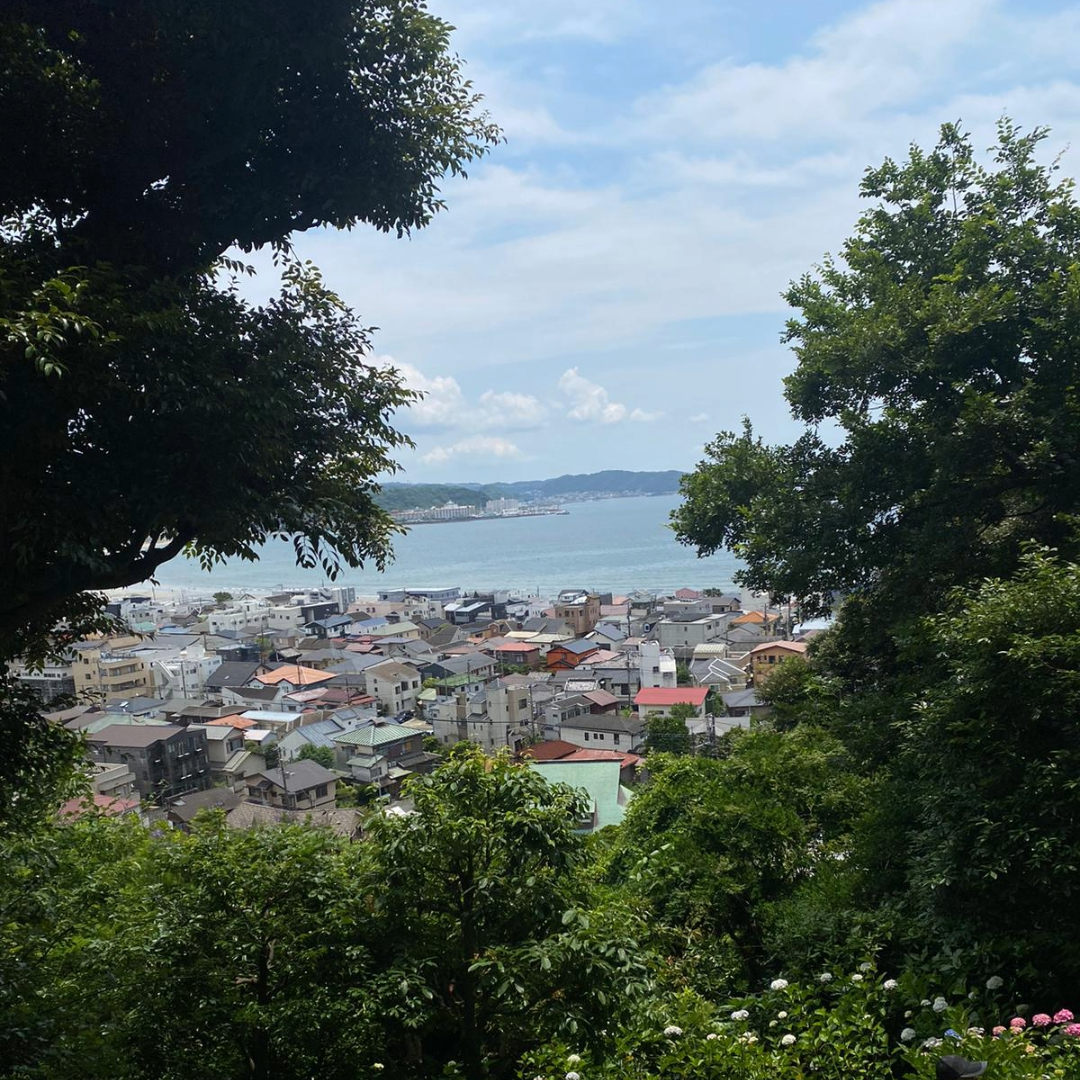
The day began bright and early as SJMC study abroad students prepared for a one-hour train ride to Kamakura to visit one of several destinations planned for the day. Students peered out the windows excitedly pointing out Japan’s distinctive architecture, infinite shops and restaurants along the rugged mountainside.
Upon arrival at Kamakura Station, students were greeted by the warm, welcoming air filled with aromatics from local shops and flora. Students followed the tightly packed streets of Kamakura and were led to one of the many historic sites located in Japan.
Hase-dera temple, also known as Hase Kannon Temple, was established around 736 A.D. This temple is not only a place of worship but also a site filled with fascinating legends and historical significance.
Mitsuru “Mark” Sakai, the group’s tour guide, led students through the winding gravel paths as a delicate breeze filled the air with the scent of hydrangeas. Sakai went into detail about the significance of the temple along with historical information.
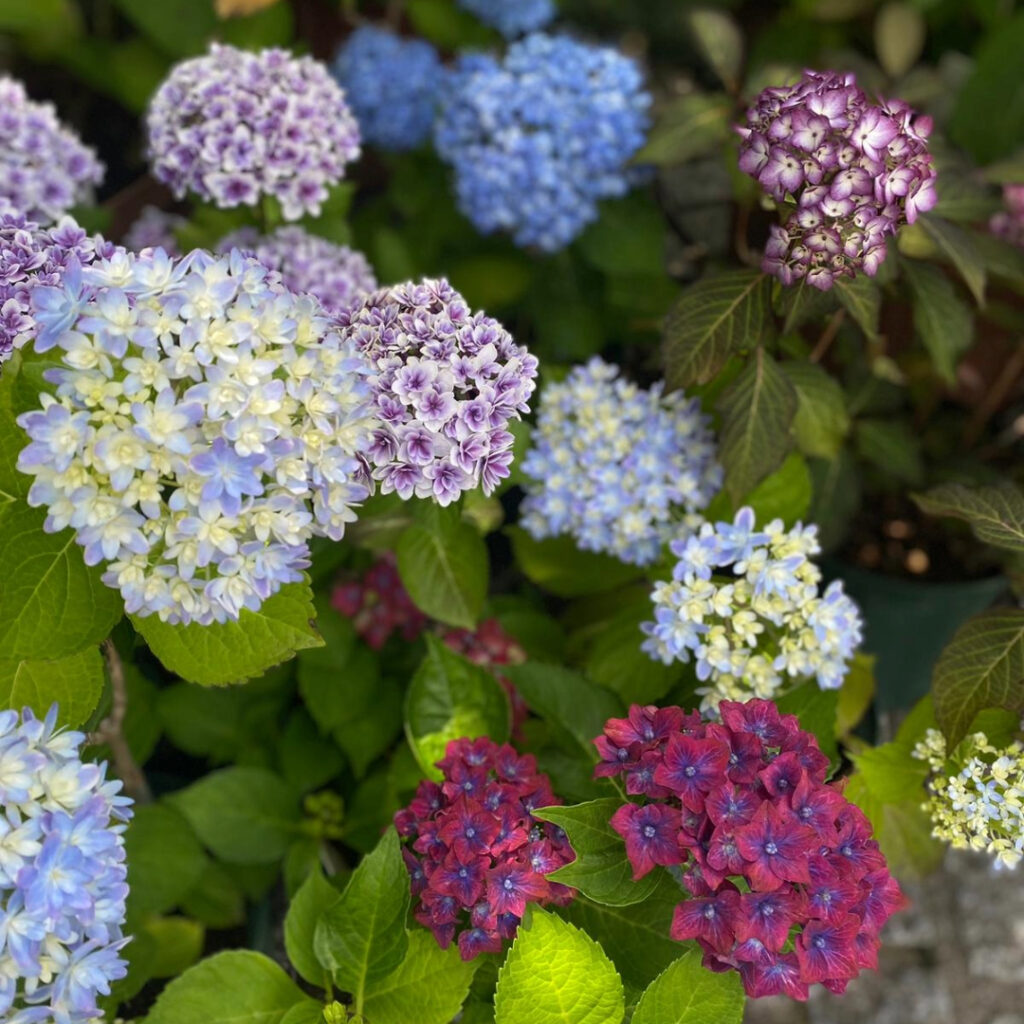
One part of the tour that stood out to many was the legend of Hase-dera and its associated central figure, the 11-headed Kannon, the goddess of mercy according to Japanese lore. According to this legend, Tokudō Shōnin carved two statues of Kannon from a single camphor tree. One of these statues was enshrined at Hase-dera in Nara, an ancient capital of Japan, while the other was set adrift in the sea as a mission to spread the teachings of Buddha.
Around noon, the sun’s scorching rays relentlessly beat down on the group as Sakai continued guiding the group through the grounds; however, the garden’s lush greenery and ocean-side breeze offered students much-needed shade and a cooling relief allowing them to listen intently as they soaked up the rich history of the temple.
“It gave me a sense of refreshment to explore and discover more about this mountainside temple,” electronic media major Cade Gulley said.
Another significant moment amongst students were the cave shrines in Benten-kutsu Cave. As students entered the cave, they were greeted with low level ceilings and a drop in temperature. Inside, students learned about the carvings and statues dedicated to Benzaiten, the goddess of music, wisdom and wealth. As they exited, some students nearly crawled to avoid banging their heads on the ceiling.
Nestled in the heart of Kamakura, this temple stands as a significant cultural and religious landmark. However, one cannot overlook the enchanting beauty of Hase-dera’s hydrangea garden, which adds to the temple’s serene ambiance. These gardens transform the temple into a sought-after destination for hanami (flower viewing) during the blooming seasons, showcasing stunning seasonal flowers such as hydrangeas. Many students enjoyed photography sessions along the picturesque hydrangea path, capturing the beauty of the blooms.
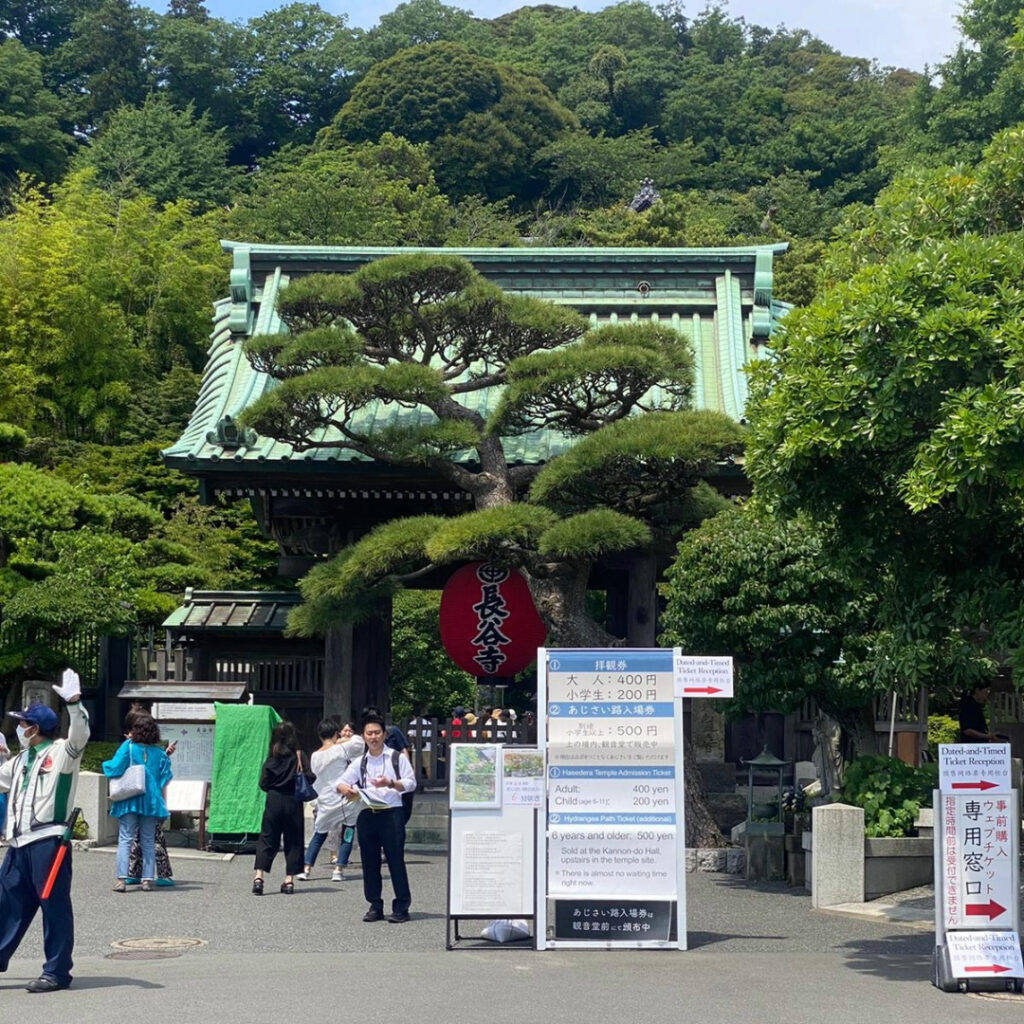
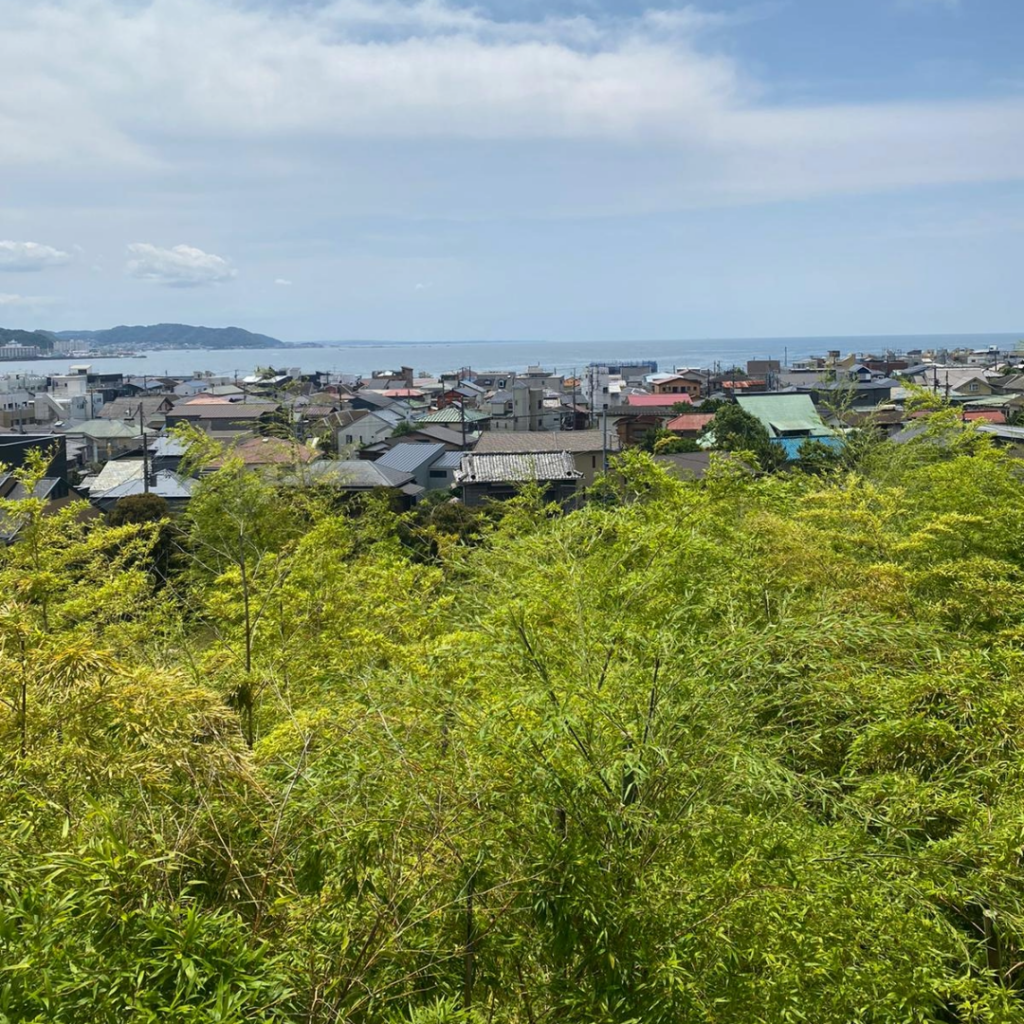
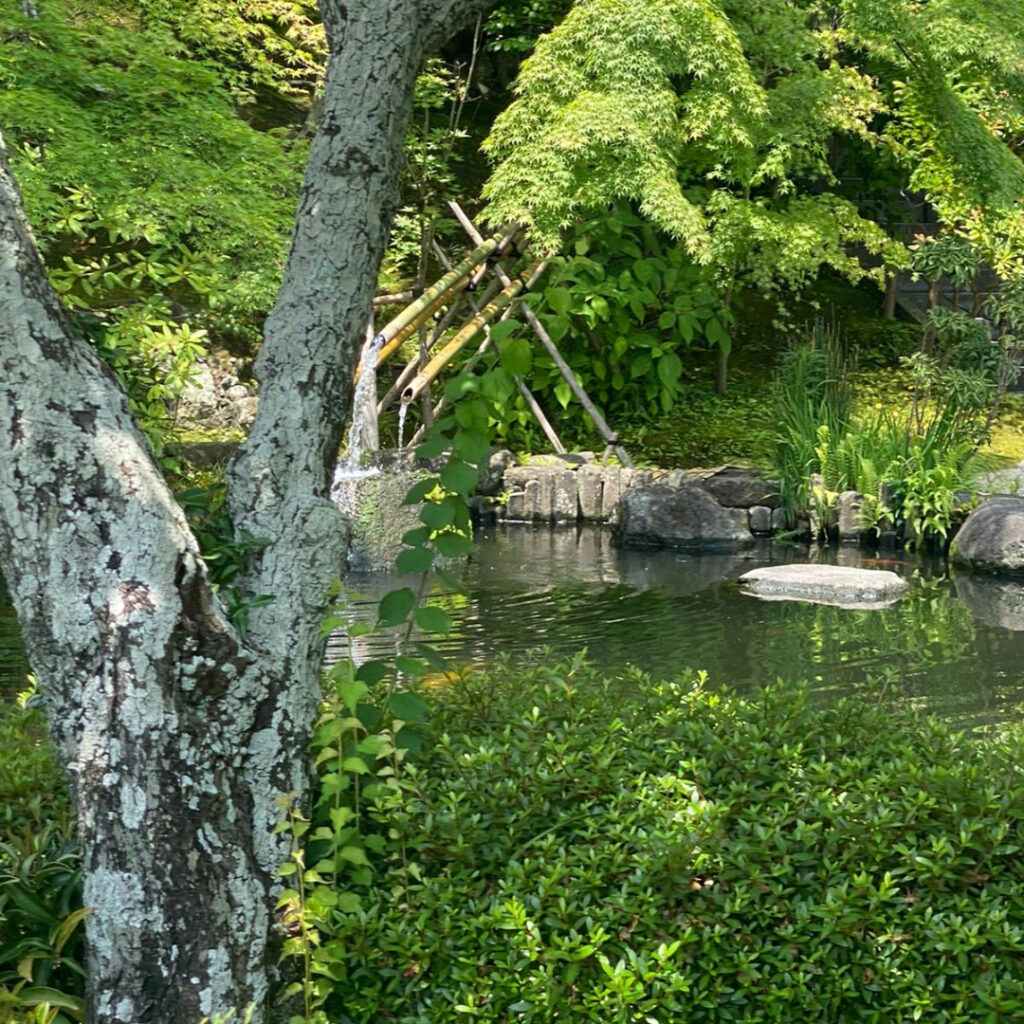
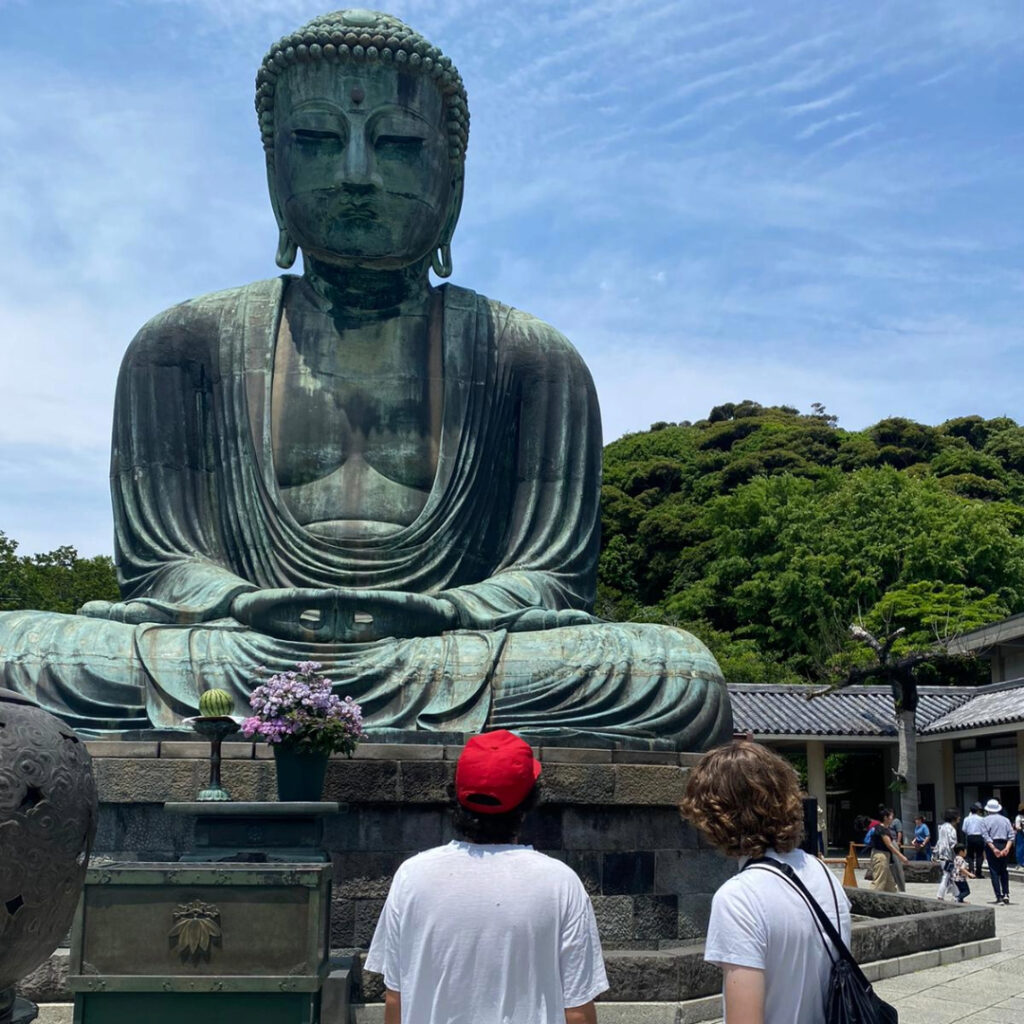

This path left many in awe as it was paired with stunning views of Sagami Bay. After vigorously climbing up the many steps of the temple, students were relieved to find the next destination was just a walk away.
As students enthusiastically chatted about their experiences at Hase-dera, led by Sakai, they made their way down the lively roads of Kamakura.
The Great Buddha, also known as the Daibutsu, stands as an iconic symbol of Japan’s rich cultural and religious heritage. Located at the Kōtoku-in Temple in Kamakura, this magnificent bronze statue has captivated visitors for centuries with both its magnificence and serene presence. The statue, seated in a meditation pose, is renowned for its impressive size and craftsmanship. It stands at nearly 44 feet tall and weighs about 121 tons.
“I was awestruck by the sheer size of the Great Buddha statue,” advertising major Lauren Reid said. “I knew it was massive, but the photos I’d seen didn’t do it justice.”
The Kamakura Daibutsu is one of Japan’s most famous landmarks, drawing millions of visitors from around the world each year.
Sakai shared with students that the statue faced a series of natural disasters yet remained resilient. The statue’s history of destruction and rebuilding showcases the enduring nature of cultural heritage and the dedication of those who work to preserve it. The statue remains a powerful symbol of the region’s abundant historical and religious heritage.
Its stunning craftsmanship and the peaceful surroundings of the Kōtoku-in Temple provided a space for students to observe and reflect.
After spending time appreciating the beauty of the Great Buddha, students were now left patiently awaiting the wonders of Enoshima Island.
Enoshima Island, located off the coast of Kanagawa Prefecture in Japan, is known for its scenic beauty, lush greenery, rocky coastlines and stunning views of the surrounding ocean. It is a small yet culturally and historically significant island, which offers visitors a unique blend of natural beauty, rich history and mythology. Enoshima is most notably associated with the legend of Benzaiten, the goddess of music, wisdom and wealth.
As students made the short trek across the bridge from Enoshima Station towards the island, there was a noticeable absence of the familiar salty ocean air they associated with beaches. Instead, the island welcomed them with a cool and floral fragrance.
According to local folklore, Benzaiten caused the island to rise from the sea in the 6th century to subdue a fearsome dragon that had been terrorizing the area. Beyond its spiritual allure, Enoshima Island offers a variety of attractions, activities and coastal treats.
Enoshima also holds vibrant local culture and cuisine and is also home to a variety of shops. Colton Winters, a digital media innovation major, interacted with Fukushoku Zakka, the owner of a Japanese streetwear shop. Despite a language barrier, Winters found common ground with Zakka in discussing the quality of denim products at 10Ten/Man10 (which means 10 out of 10 in Japanese), which led him to purchase a denim bag. The store owner was very enthusiastic in describing the process in which he designed and made his clothing, and shared his Instagram account. It was a memorable interaction in which the store owner proudly demonstrated the many treasures of his shop.


“It’s an unforgettable experience that has shaped the way I view the fashion culture in Japan,” Winters said.
Japan’s sacred sites offer a unique perspective to the country’s cultural, spiritual and geographical history. Students embarked on an unforgettable journey that both informed and excited.
While today focused on popular tourist sights, students prepared for professional visits with Rikkyo University and the Tokyo bureau office of the Wall Street Journal on Friday.





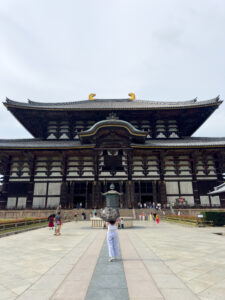
This is so well written! The descriptive detail and stunning pictures made me feel like I was on the journey too. Great job!